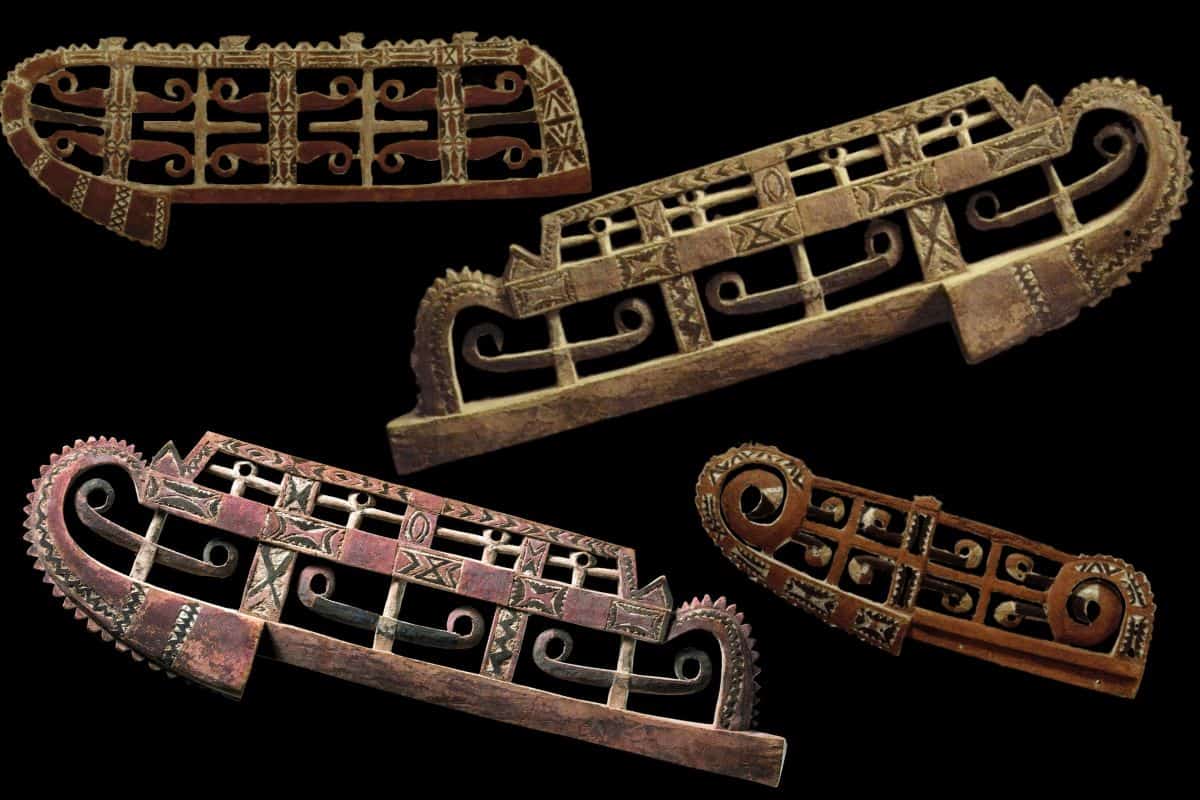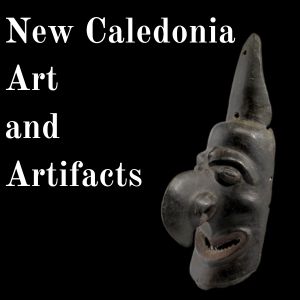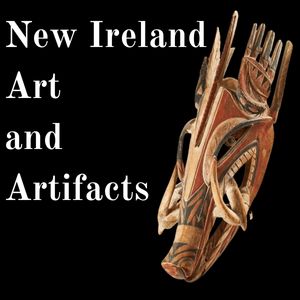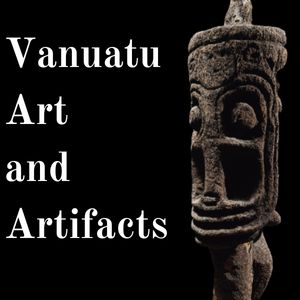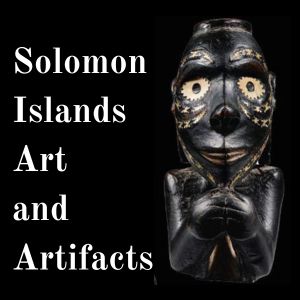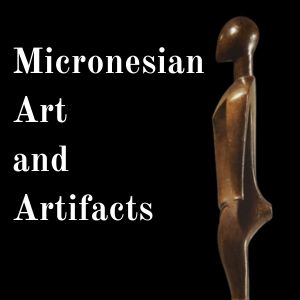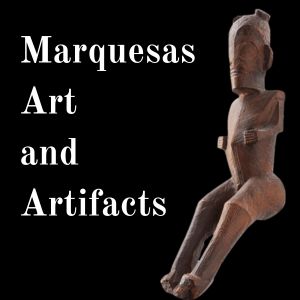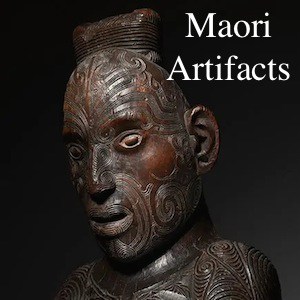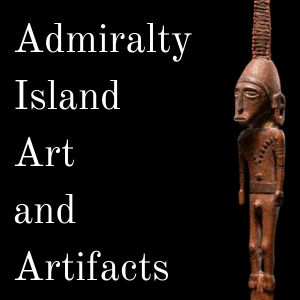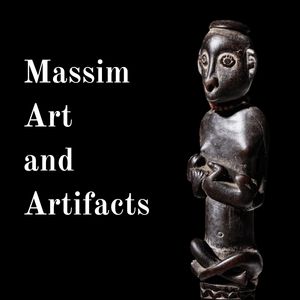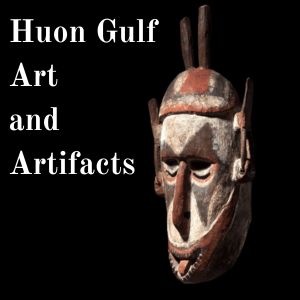Admiralty Island Art and Artifacts
Old Admiralty Island Art and Artifacts are valuable and very collectable. This is especially true for pieces made for indigenous use and not for sale to tourists. Artistically the Admiralty Islands have a lot in common with the Hermit Islands and Micronesia.
The area is probably best known for its huge feast bowls and figurative weapons. Much of the art was collected during the German colonial period and disappeared through Lutheran mission influence.
This article can not cover all the art from this group of islands but covers the more common art and artifacts produced. Many of the greatest Admiralty island masterpieces are quite small and it is often overlooked by collectors.
I buy and sell Admiralty Island art and Artifacts and the process is easy. Just send me a photo of your Vanuatu Art of Artifact and I will give you an idea of what I would be willing to buy it for.
I hope you enjoy the article and please feel free to share.
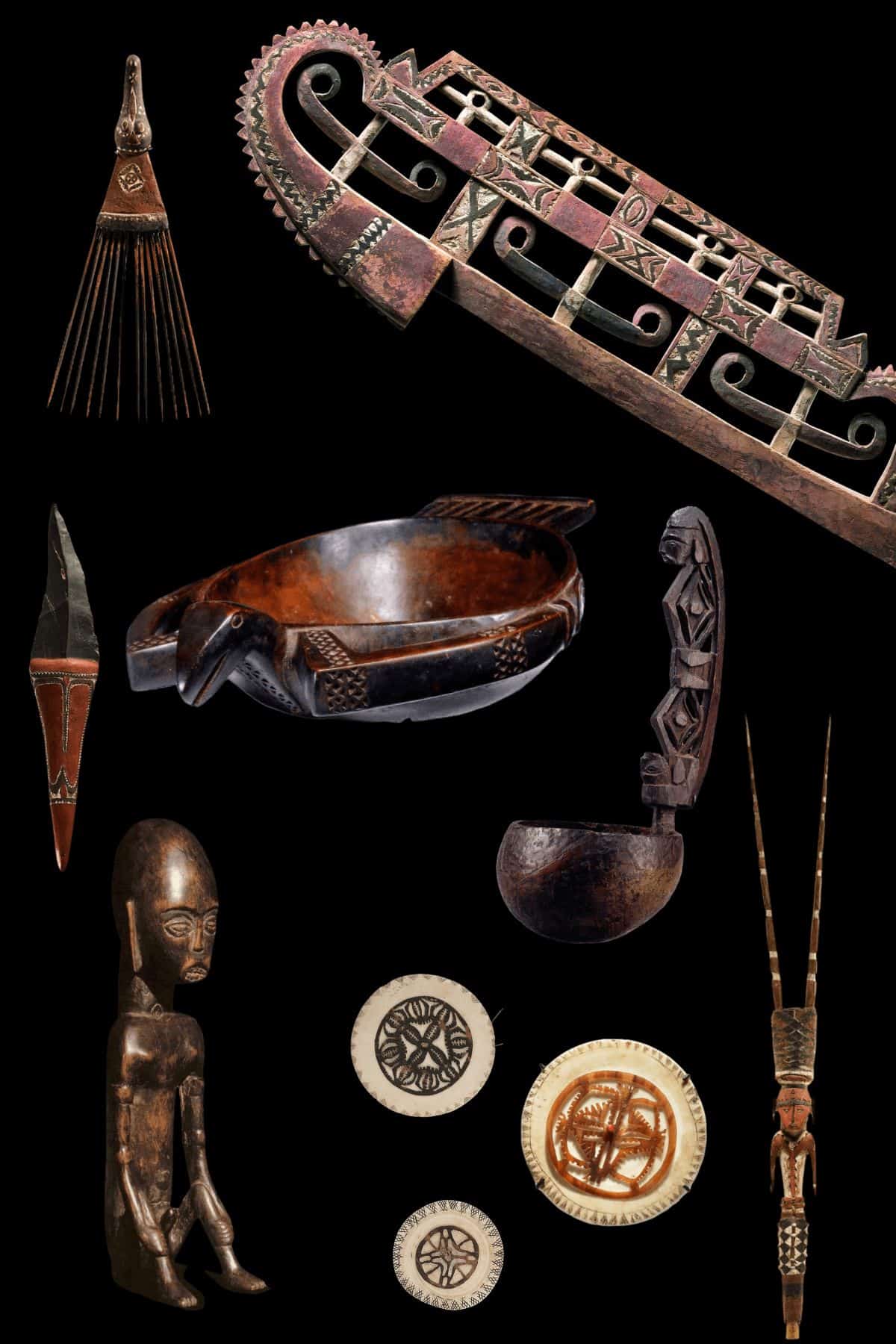

Background of Admiralty Islands art and Artifacts
The Admiralty Islands is a group of islands located in the western Pacific Ocean and a part of Papua New Guinea. The islands are now called Manus Province. The indigenous population of the Admiralty Islands speaks various Austronesian languages.
Although portugese explorers knew of the Islands existence in the 17th C, european presence in the Islands remained very limited until the late 19th century.
In the late 19th century, Germany established colonial control over the Admiralty Islands as part of German New Guinea. The German administration brought significant changes to the culture. They also introduced cash crops such as copra and the establishment of administrative structures.
During World War II, the Admiralty Islands played a significant role as a strategic base for the Allied forces. Manus Island, in particular, used as a major naval and air base by the United States during the Pacific campaign.
Culturally the Admiralty Islands is very different to their melanesian neighboors. Notably mask cultures are absent. There is evidence of extensive trade with New Ireland and New Britain for extended periods of time.
Admiralty island Art and Artifact Types
Sculpture
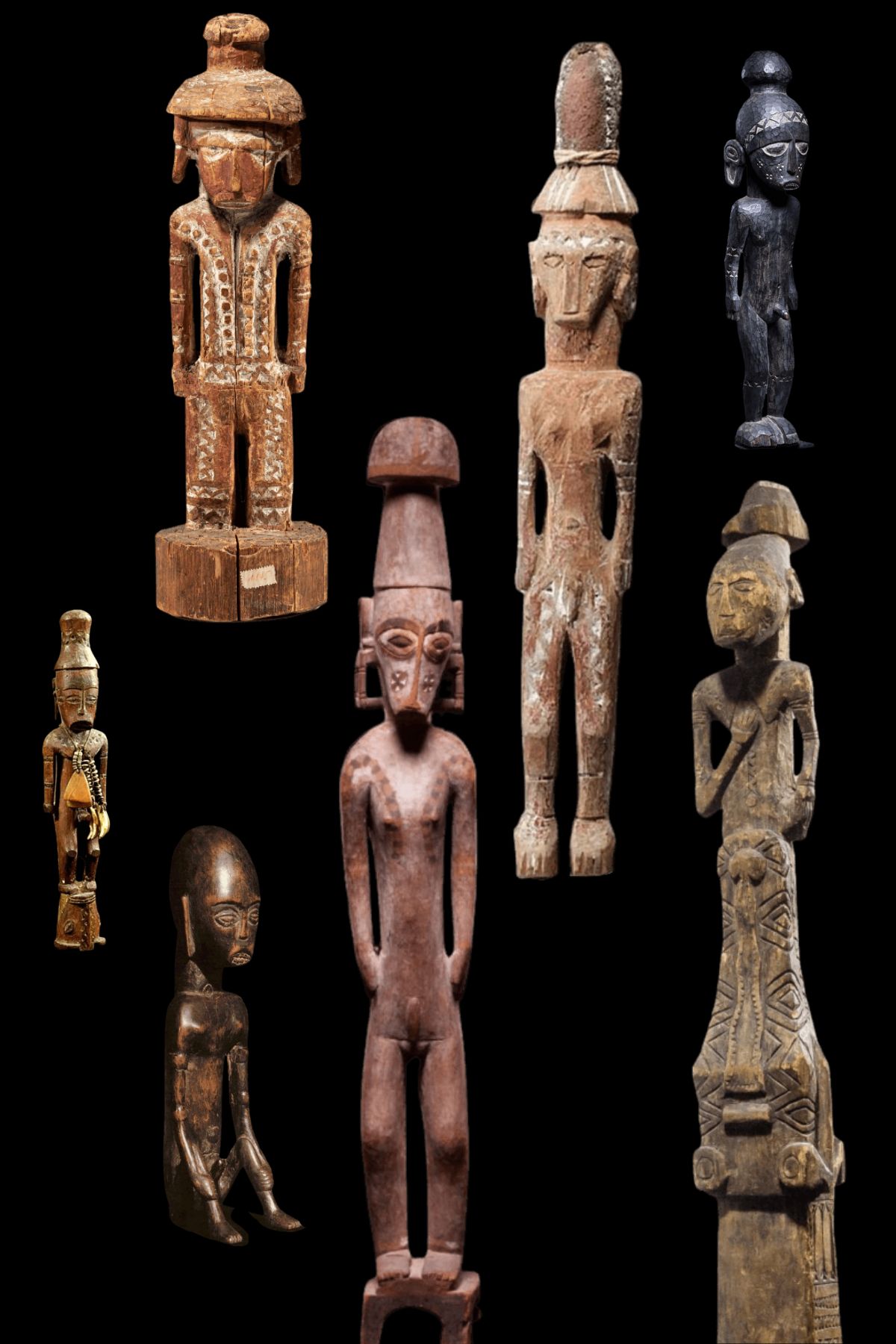
Admiralty Island Sculpture
Free standing Admiralty island sculpture is exceedingly rare. The majority of sculpture is part of larger objects. The top of a men’s house ladder sometimes had sculpture and so did a unique form of marriage bed. Many of the other free standing sculpture are early made for sale pieces. These early free standing sculpture are collectable in their own right but are not traditional artifacts.
The vast majority of Admiralty island sculpture is quite small and either a part of a weapon or a part of a limestick or other utalitarian object.
Length of figures
20cm -70cm
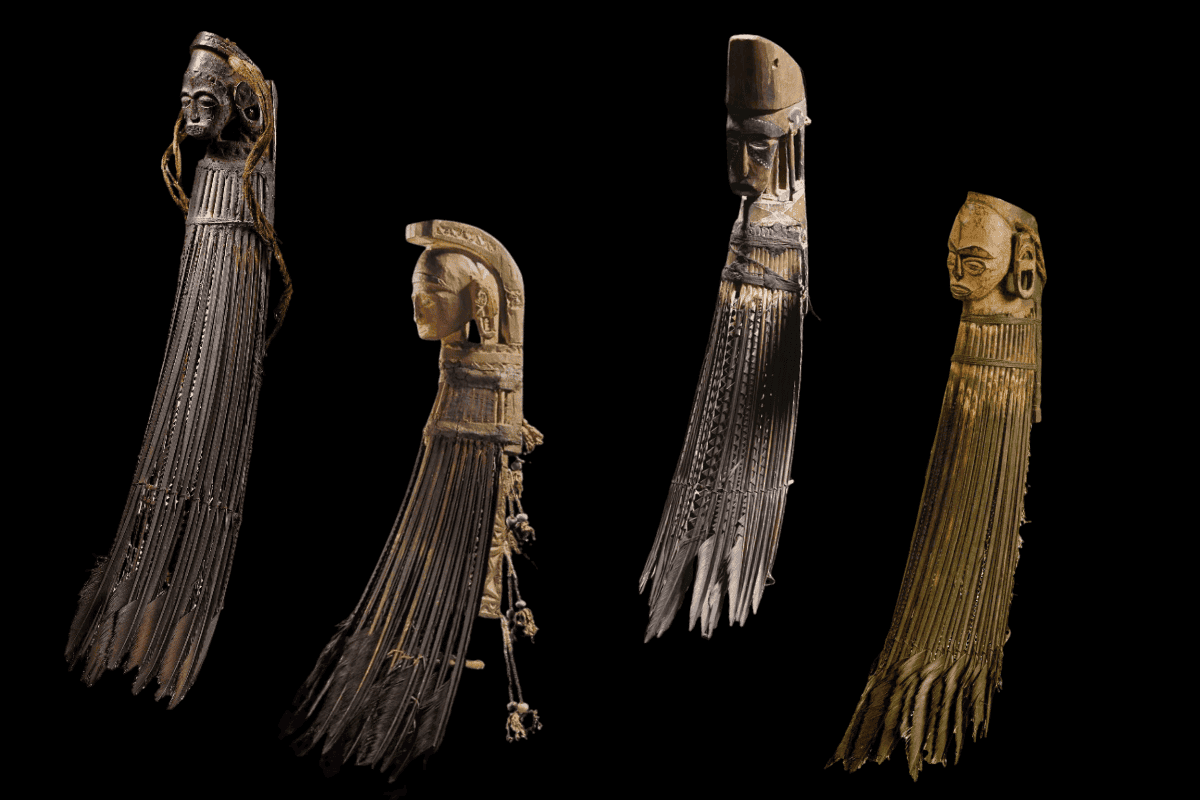
Admiralty Island War Charms
These charms were made from carved wood and frigate bird feathers. They were worn hanging down on the back of the neck by warriors who had already achieved success in battle.
They are rare because they were banned by colonizers and are one of the most collectable types of adornment.
Admiralty Island art and artifacts
Lime Spatula
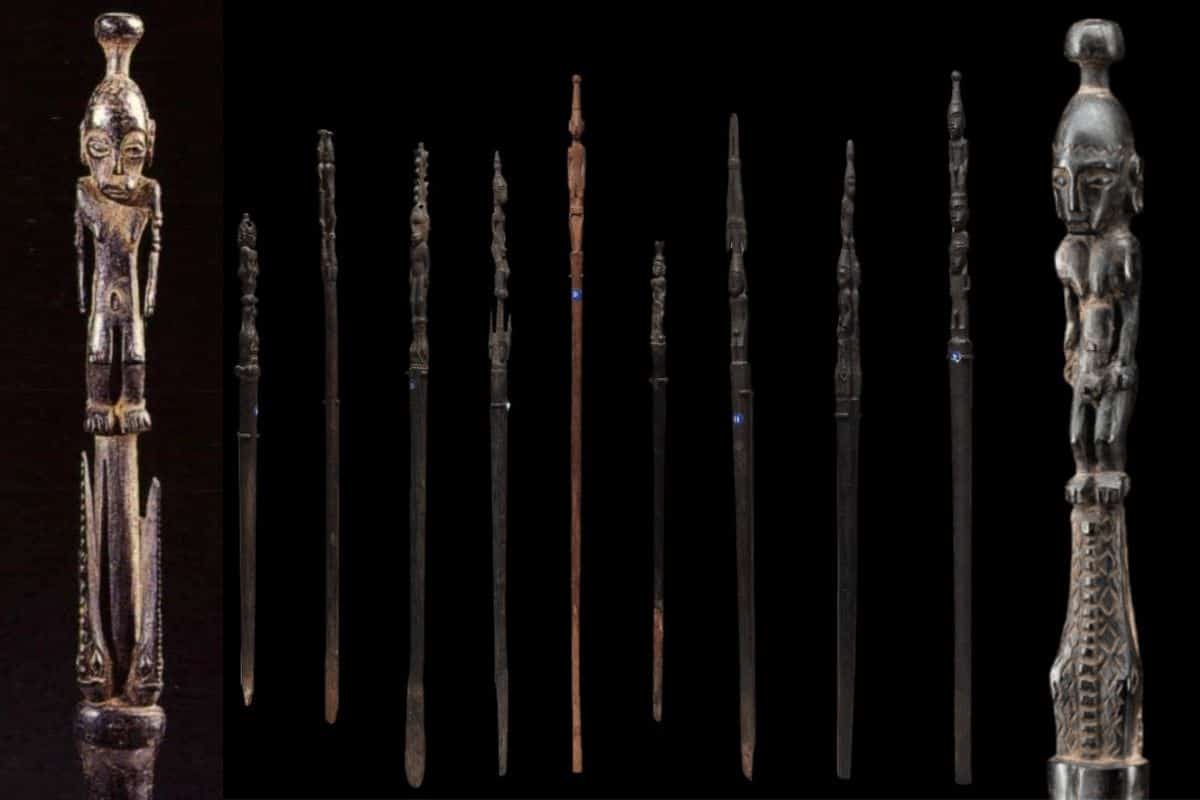
Length of Spatula’s 35cm – 55 cm
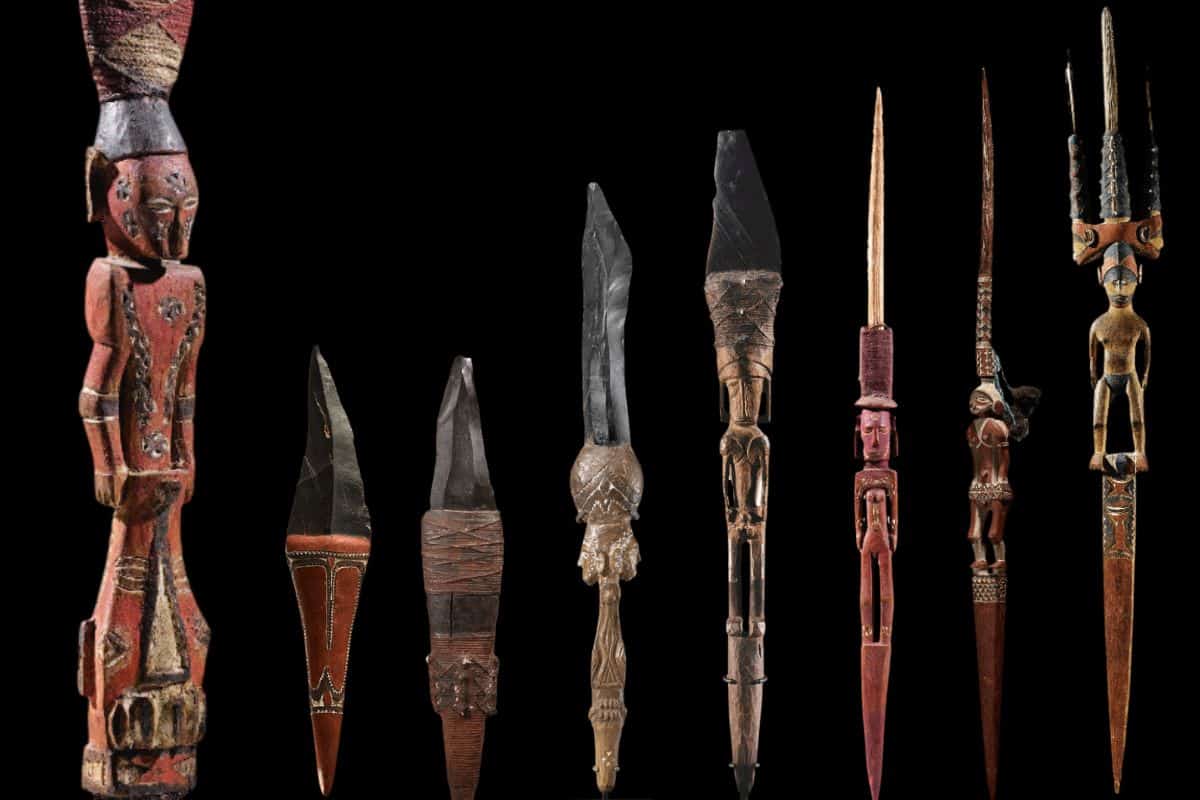
Admiralty Island daggers
The Admiralty Islands is one of the few places with obsidian in abundance and it was much prized. The obsidian napped into blades and used for daggers. These daggers were not just weapons but also a symbol of status and some carved with wonderful figurative handles.
Some daggers used stingray spines instead especially in the Islands further away from sources of obsidian
Length of Daggers 30cm – 60cm
Admiralty Island Spears
The vast majority of Admiralty Island spears are plain obsidian attached with bush fibre and covered in mastic. The spear heads often had beads on the bush fibre string and painted in ochre for decoration.
Some spears like daggers though were intricately carved and are miniature masterpieces.
Only spear tips shown.
length of the entire spear 180cm – 260 cm
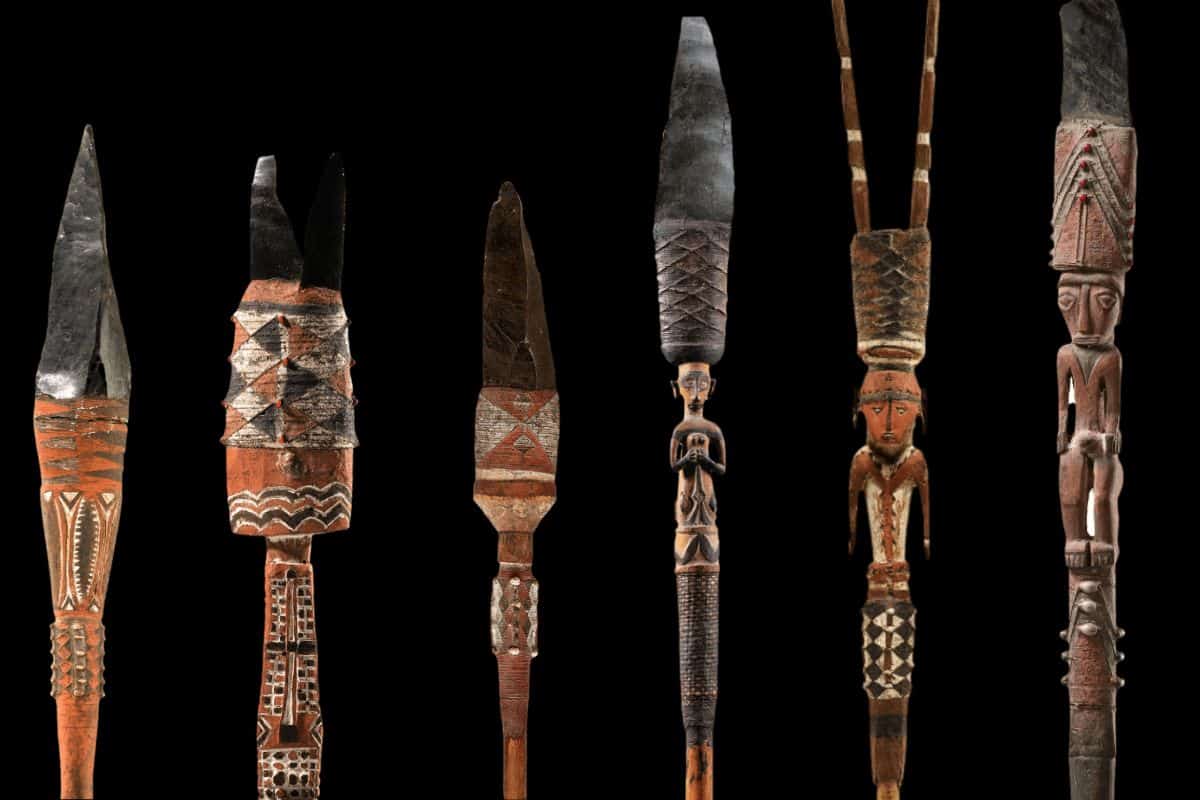
Bowls and ladels
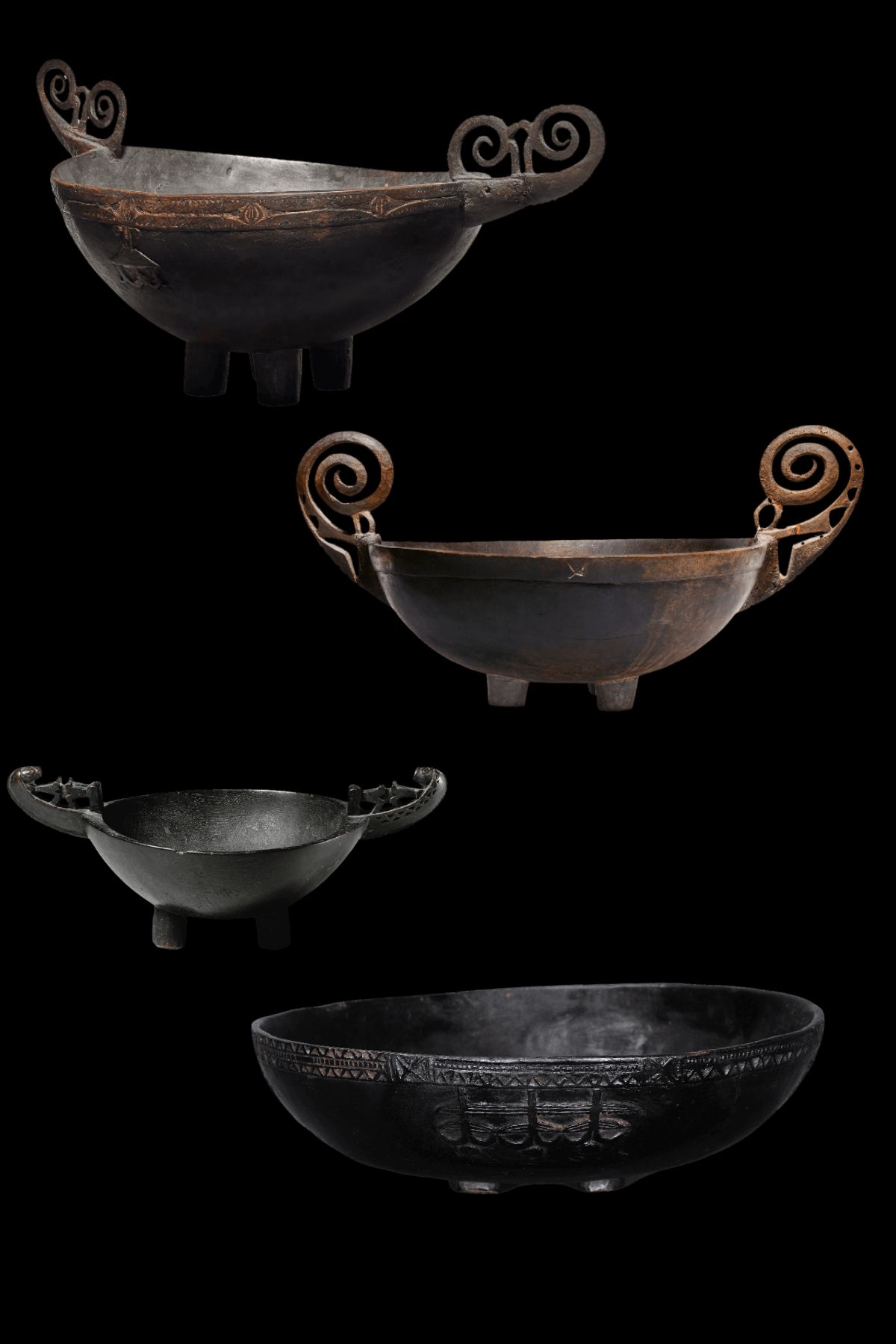
Admiralty island Bowls
Admiralty island bowls come in many sizes but the most collectable are the large ones made for feasting. Some of the smaller bowls however are also highly sort after if they are shaped like dogs or birds.
Most bowls stand on four short legs and have clan symbols carved into the rim. The bowls used to make various Sago dishes with sago mixed with other ingredients for flavor. The Family or clan will all then communally share from the same dish often scooping out a portion onto a banana leaf
Sizes of Plate vary from 50cm-127cm.
Admiralty island Figurative Bowls
Bowls shaped like animals are often smaller but still very collectable. They tend to be far rarer. The number of bird shaped bowls is greater than dog shaped bowls.
How collectable they are really depends on the quality of the workmanship and age.
Bird Shaped bowls are also found in the Huoun Gulf and Siassi islands.
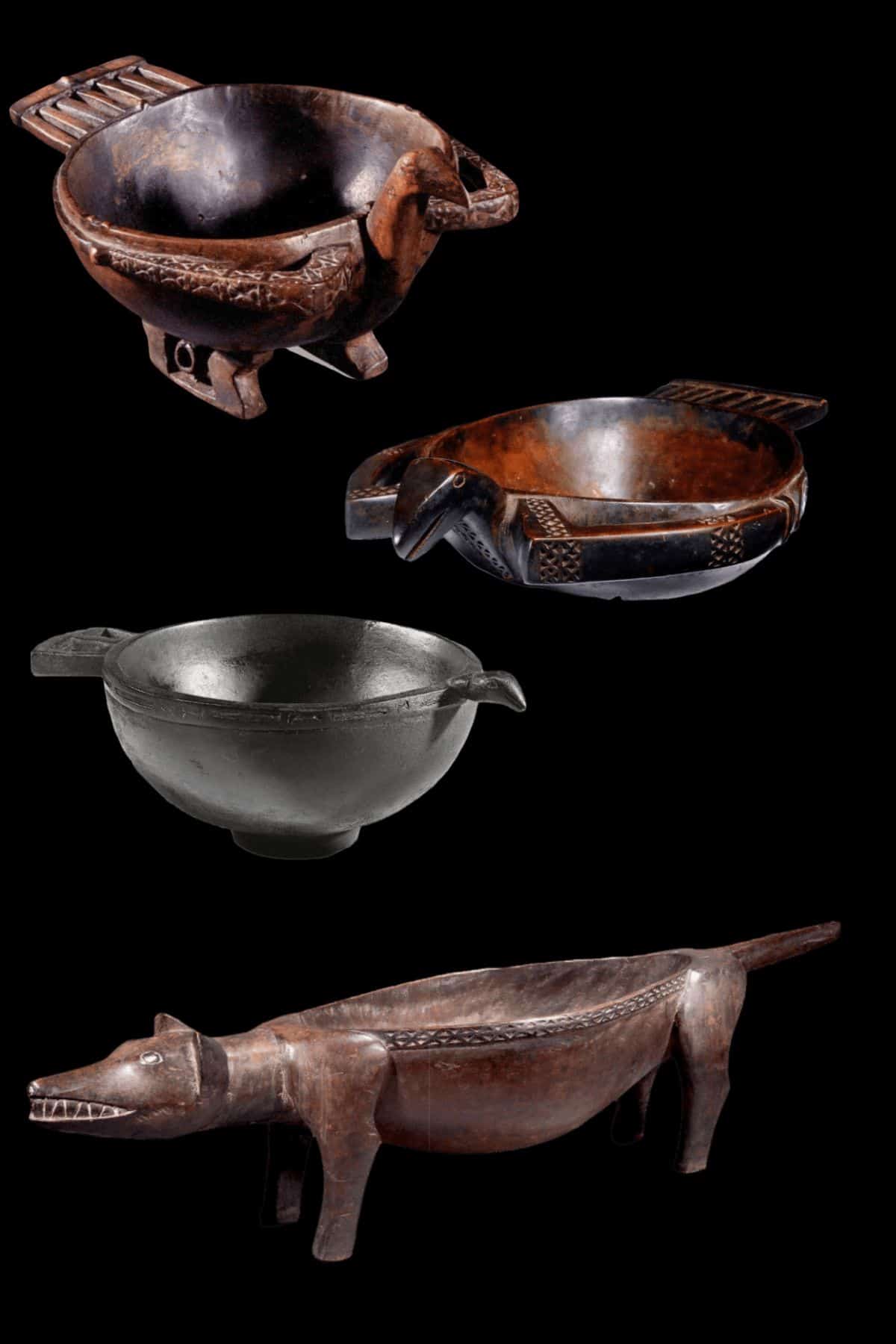
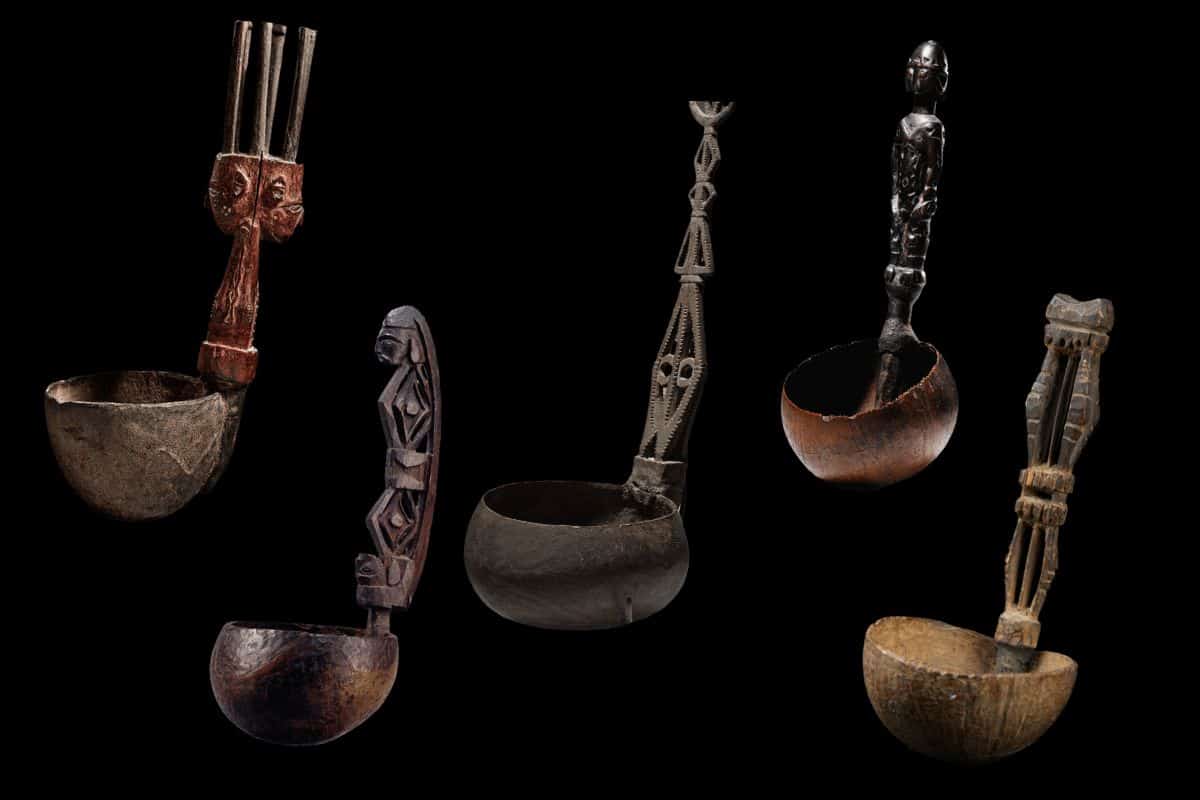
Food scoops with coconut bowl and carved wooden handles 25cm – 45 cm
Admiralty islands Art and artifacts Adornments
Admiralty Island Marriage Apron
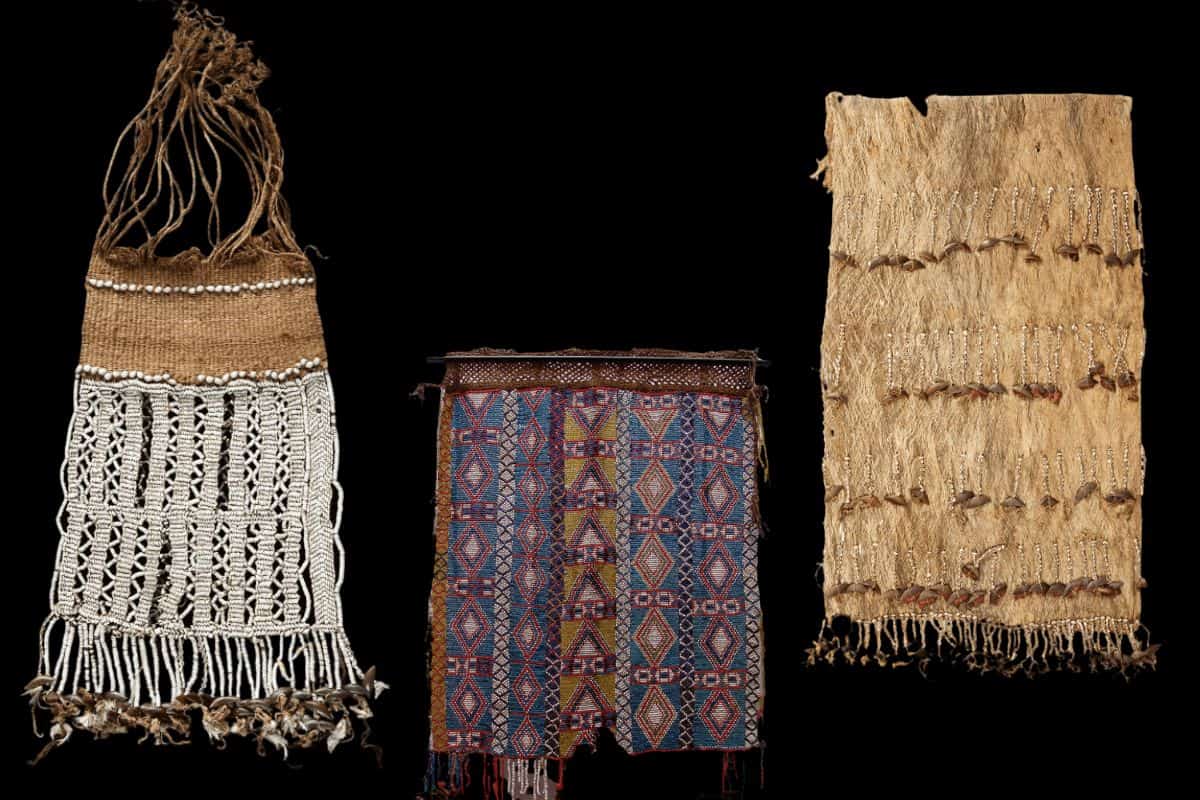
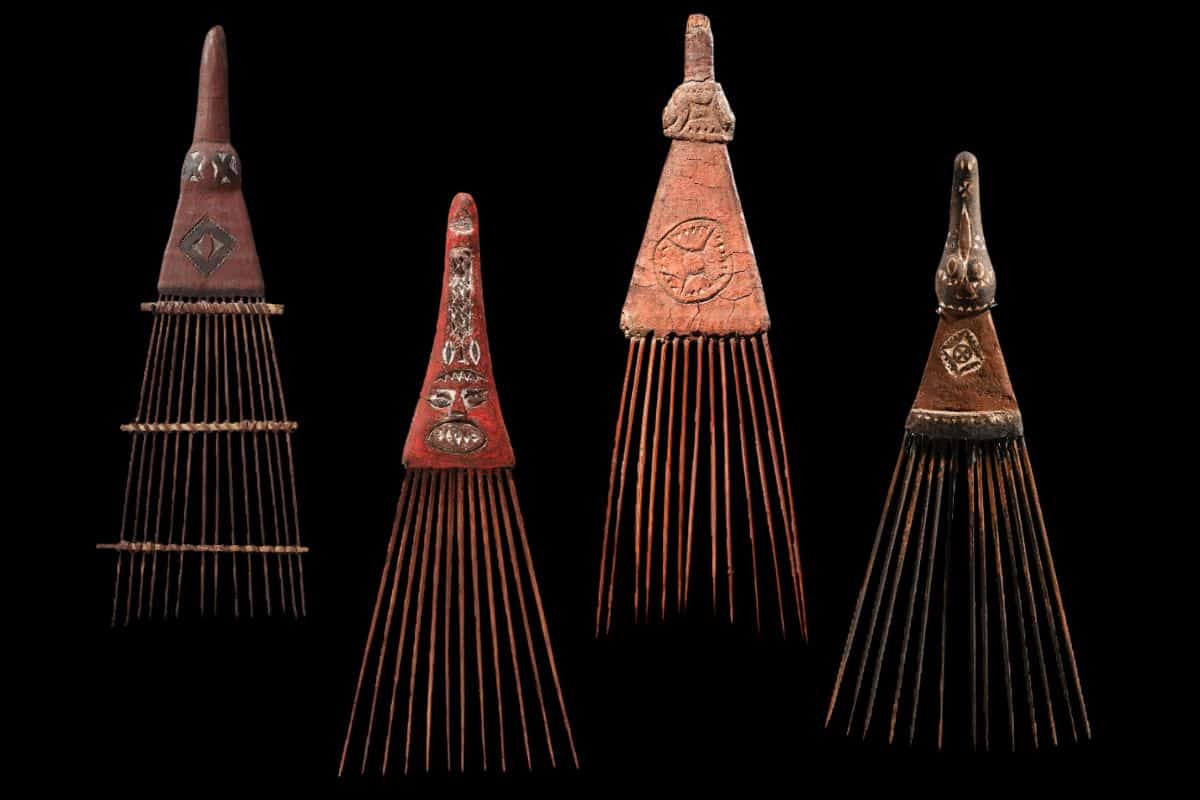
Combs
Admiralty Island combs are made from lengths of coconut palm frond stem with a mastic paste tope. They often have some form of clan symbol in the mastic paste painted on with ochre and charcoal.
These hair combs were not so much for combing hair as they were worn as an adornment. Hair combs are common and diverse in Pacific cultures and are collectable but not hugely valuable.
Admiralty Island Kap Kap
Made from turtle shell on a disk of giant clam these were mainly a mans adornment although small ones were sometimes worn by important women.
They can be distinguished from New Ireland Kap kaps by design andI because the Admiralty islanders engraved triangles around the rim of the clamshell.
These adornments were usually worn as a necklace but were sometimes worn in the hair.
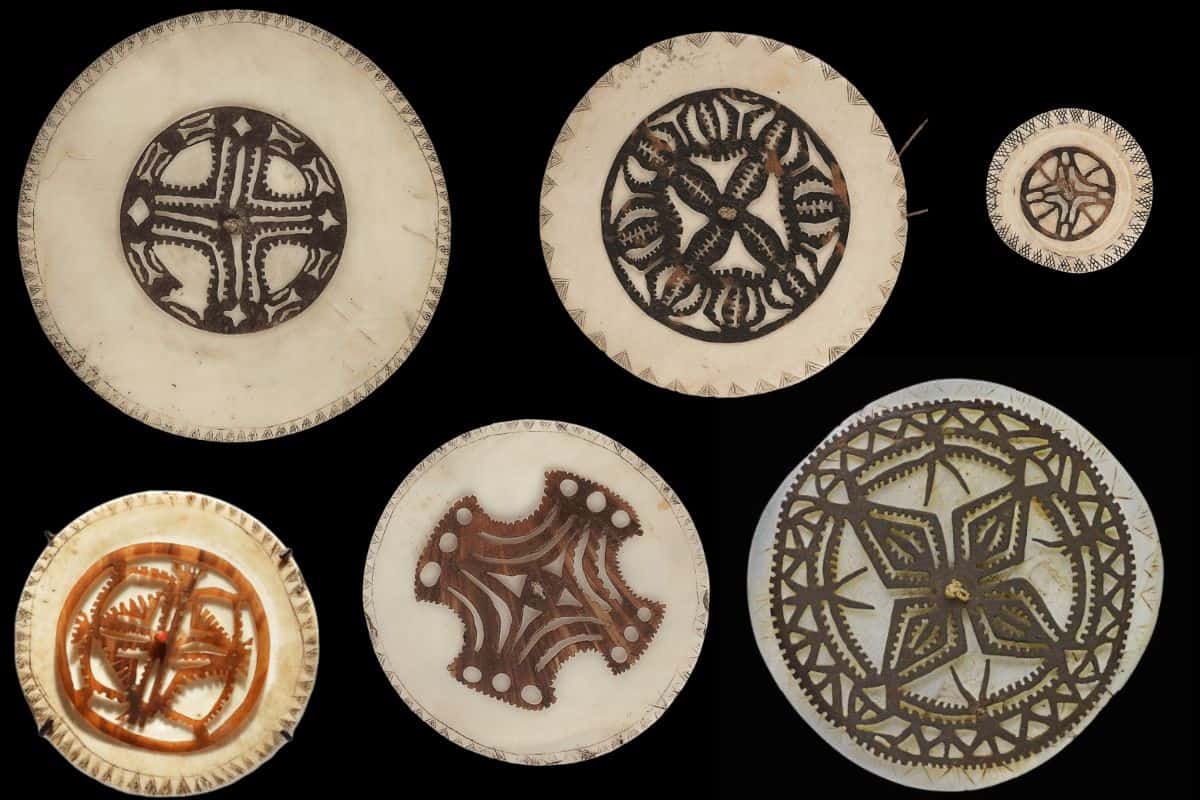
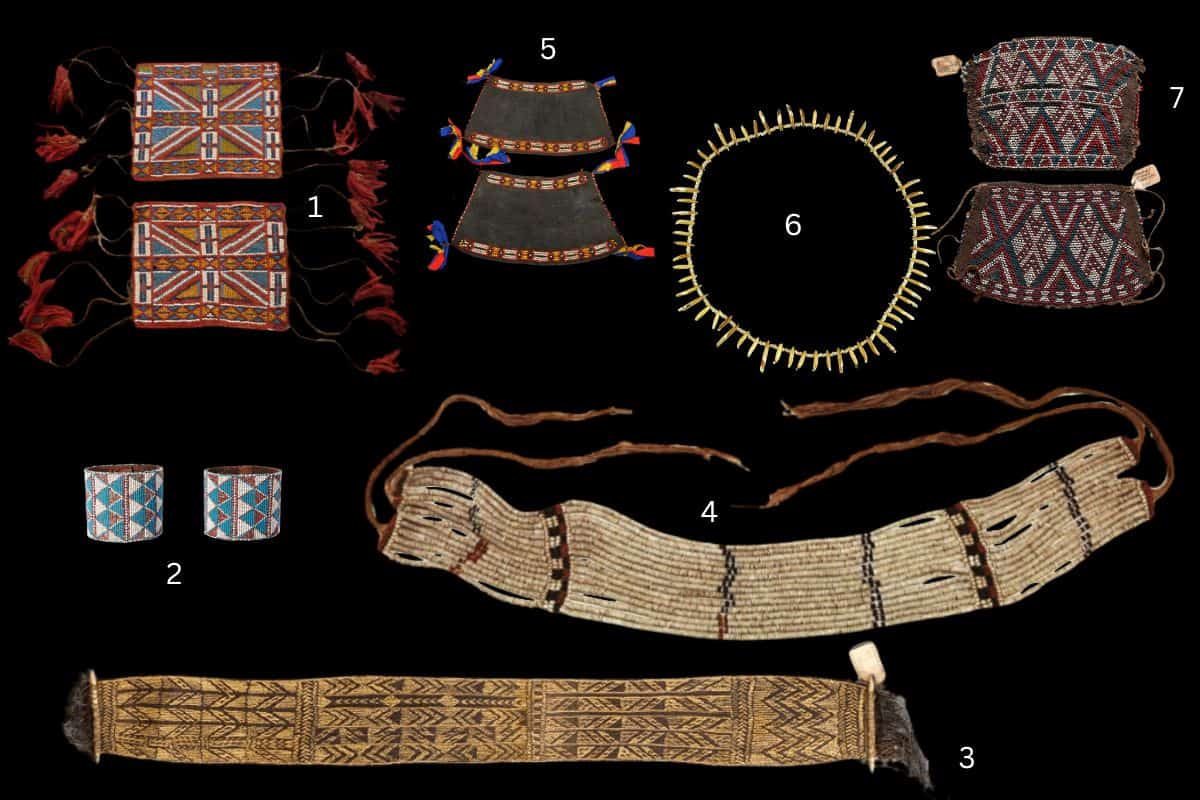
Other Adornments
1. Leg Cuffs made from glass beads
2. Armbands made from beads and bush material
3. Sash made from woven orchid fibre
4. Sash made from shell money
5. Armbands made from mastic on bush material
6. Dog tooth currency necklace
7. leg bands made from glass beads
Admiralty Island War Canoe Prows
The Admiralty Islands was not always a friendly place. Like the Solomon Islands clans and tribes raided by canoe. This involved a special interisland paddled canoe which had a clan-specific prow.
War canoes declined sharply after missionary interaction. Most examples of prow collected quite early and they are rare. Canoes are still extensively used but the clan specific prow has disappeared.
Length varies from 40cm -85cm
